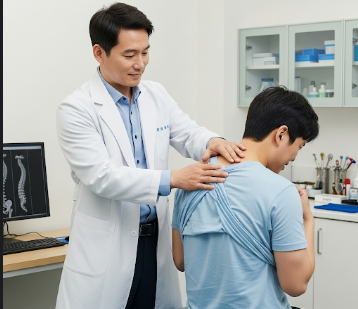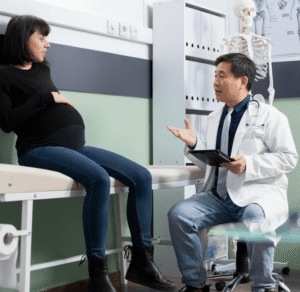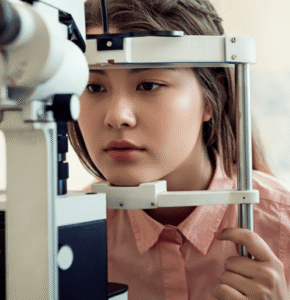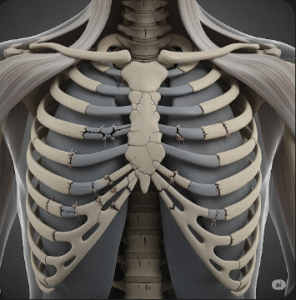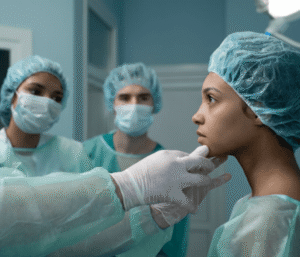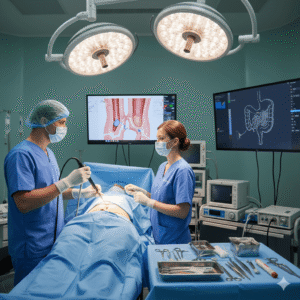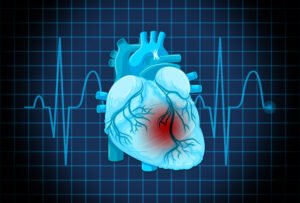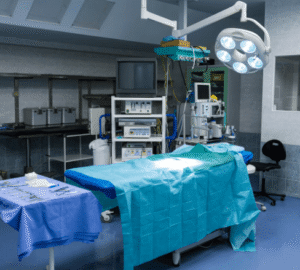Overview
Upper back pain refers to discomfort, stiffness, or aching felt in the thoracic region of the spine, between the neck and the lower ribs. This area supports the shoulders, head, and upper body and is closely connected to the spinal column, muscles, ligaments, and nerves.
➤ Upper back pain is less common than lower back pain but can significantly affect posture, mobility, and daily activities.
➤ Causes range from muscle strain and poor posture to spinal conditions, injuries, or underlying diseases.
➤ In South Korea, advanced diagnostics, physiotherapy, and minimally invasive interventions provide effective treatment for patients experiencing chronic or acute upper back pain.
Key Facts
► Location: Between the base of the neck and the bottom of the rib cage.
► Common causes: Muscle strain, poor posture, spinal arthritis, herniated discs, fractures, or organ-related referred pain.
► Symptoms: Pain, stiffness, tingling, numbness, or reduced mobility.
► At-risk groups: Office workers, athletes, older adults, and people with sedentary lifestyles.
► Treatment in Korea: Includes imaging diagnostics, physiotherapy, minimally invasive surgery, and integrative care programs.
What is Upper Back Pain?
Upper back pain is a symptom that arises from muscular, skeletal, or neurological issues in the thoracic spine. The pain may be:
➔ Dull or aching, often related to muscle fatigue or poor posture.
➔ Sharp or stabbing, possibly caused by nerve compression, fractures, or spinal disorders.
➔ Radiating, traveling around the ribs, shoulders, or chest, which may indicate referred pain from internal organs.
Common anatomical contributors include:
► Thoracic vertebrae (T1–T12).
► Intervertebral discs providing shock absorption.
► Paraspinal muscles, including trapezius, rhomboids, and erector spinae.
► Ligaments stabilizing the spine.
► Nerves that can transmit pain signals if compressed or irritated.
What Symptoms Are Related to Upper Back Pain?
Upper back pain is often accompanied by other signs that help determine its cause:
→ Stiffness and reduced mobility, especially after prolonged sitting or standing.
→ Muscle spasms or tightness along the thoracic region.
→ Numbness or tingling in the arms, hands, or chest if nerves are affected.
→ Pain radiating around the ribs or shoulder blades, suggesting nerve or disc involvement.
→ Difficulty with breathing or deep inhalation, sometimes related to muscular or spinal issues.
→ Weakness in the arms or grip, which can indicate nerve compression.
→ Localized swelling or tenderness, which may result from trauma or inflammation.
What Causes / Possible Causes of Upper Back Pain
Muscular Causes
➤ Muscle strain or overuse from lifting, exercise, or prolonged poor posture.
➤ Trigger points and myofascial pain syndrome causing localized discomfort.
➤ Sports injuries in athletes or repetitive strain in workers.
Spinal Causes
➔ Degenerative disc disease – breakdown of intervertebral discs over time.
➔ Herniated or bulging discs – can compress spinal nerves causing pain.
➔ Osteoarthritis – wear and tear in the thoracic joints.
➔ Scoliosis or kyphosis – abnormal spinal curvature affecting posture and muscle balance.
➔ Fractures or trauma – often from falls or accidents.
Nerve and Neurological Causes
→ Thoracic radiculopathy – nerve compression causing radiating pain.
→ Spinal stenosis – narrowing of the spinal canal putting pressure on nerves.
Organ-Related Causes (Referred Pain)
► Heart conditions, such as angina or myocardial infarction, can refer pain to the upper back.
► Lung conditions, including infections or pleuritis.
► Gallbladder or liver problems causing referred thoracic pain.
Lifestyle and Postural Factors
➤ Prolonged sitting with poor ergonomics.
➤ Carrying heavy backpacks or shoulder bags.
➤ Sedentary lifestyle causing muscle weakness and imbalance.
When Should I See My Doctor?
Medical evaluation is necessary if upper back pain is accompanied by:
➤ Sudden or severe pain after trauma or accident.
➤ Pain radiating to arms, chest, or abdomen.
➤ Numbness, tingling, or weakness in limbs.
➤ Difficulty breathing or swallowing.
➤ Persistent pain lasting more than a few weeks.
➤ Signs of fever, unexplained weight loss, or night pain, which may indicate infection or malignancy.
Prompt attention helps prevent complications and ensures correct diagnosis and treatment.
Care and Treatment
Self-Care and Lifestyle Adjustments
► Practice proper posture at work and home.
► Engage in strengthening exercises for upper back and core muscles.
► Use ergonomic chairs, desks, and supportive mattresses.
► Apply ice or heat therapy to reduce inflammation or muscle tension.
► Avoid lifting heavy objects improperly.
Medical Treatments
➔ Prescription pain relief and anti-inflammatory medications.
➔ Muscle relaxants for severe spasms.
➔ Physical therapy to improve flexibility, strength, and posture.
➔ Injections (corticosteroids or nerve blocks) for chronic or severe pain.
Advanced and Surgical Options
→ Minimally invasive procedures for herniated discs or spinal stenosis.
→ Spinal fusion or corrective surgery in cases of severe deformity or fracture.
→ Nerve decompression for persistent radiculopathy.
Treatment Options in Korea
Korea offers highly specialized spine and musculoskeletal care, integrating diagnostics, therapy, and advanced surgical techniques.
Diagnosis in Korea
➤ MRI, CT, and X-ray for spinal evaluation.
➤ Electromyography (EMG) for nerve function assessment.
➤ Laboratory tests to rule out systemic causes.
Non-Surgical Treatments
► Tailored physiotherapy programs to restore mobility and strength.
► Pain management using advanced techniques like laser therapy, TENS, or ultrasound therapy.
► Lifestyle counseling for posture and ergonomics.
Surgical & Advanced Interventions
➔ Minimally invasive spinal surgery.
➔ Robotic-assisted spinal procedures for precision and faster recovery.
➔ Corrective surgery for severe scoliosis or kyphosis.
Rehabilitation and Lifestyle Support
→ Structured exercise programs for long-term spinal health.
→ Digital monitoring and follow-up to prevent recurrence.
→ Integrated care combining physiotherapy, medication, and ergonomic education.

